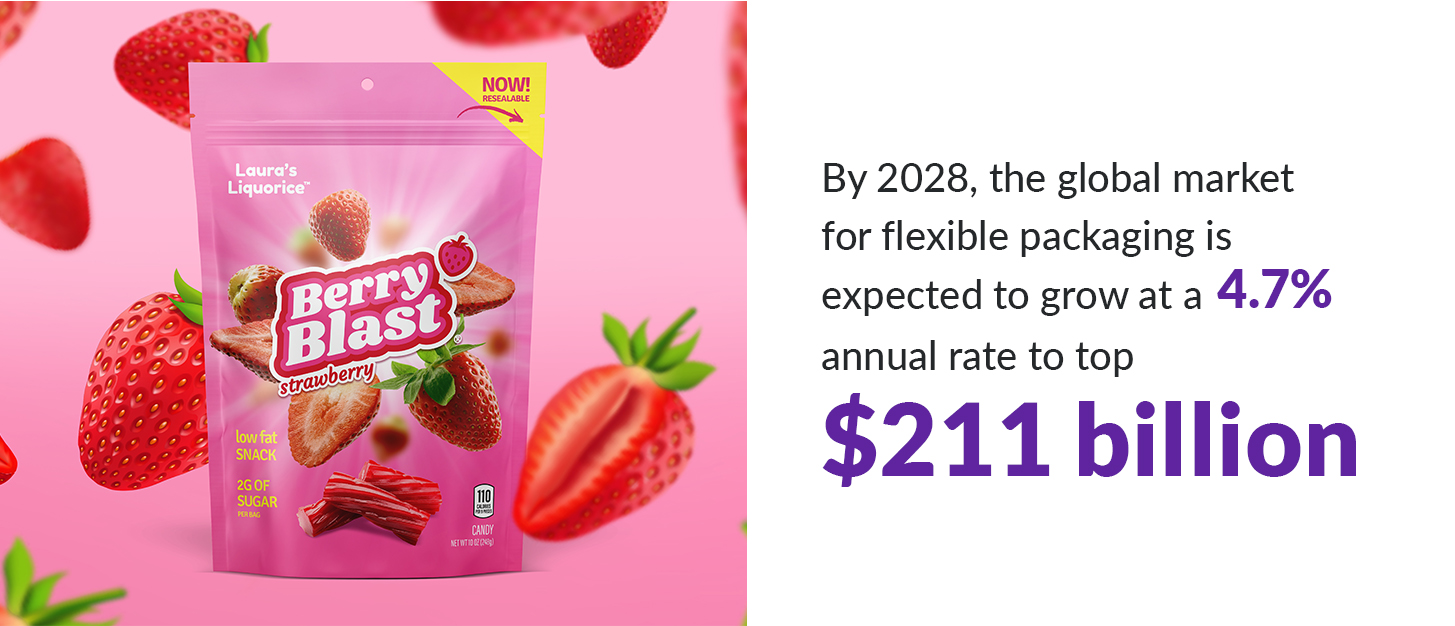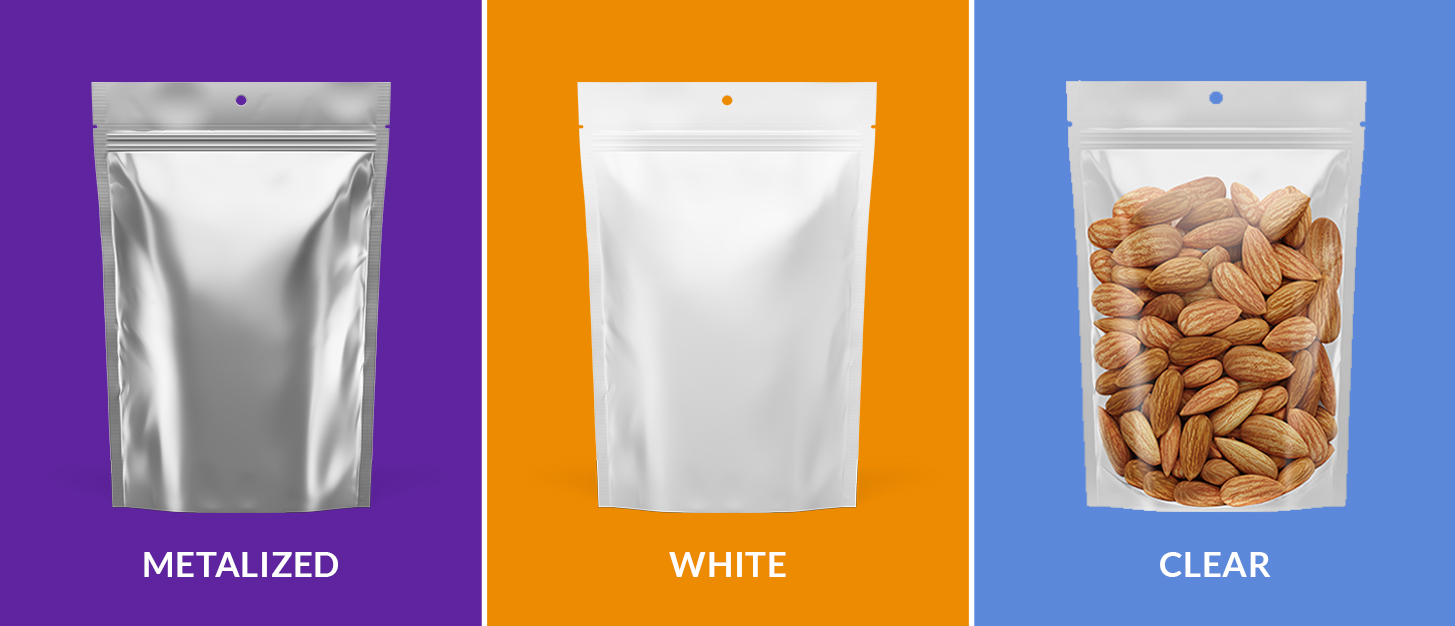Which Flexible Packaging Film is Best?
The latest research from Global Market Estimates is in and the flexible packaging category continues to thrive. The global market for flexible packaging is expected to grow at a 4.7% annual rate to top $211 billion by 2028.
That’s a lot of pouches. There are also a lot of options to consider. For example, choosing the right flexible packaging film is one of the most important decisions you can make when bringing a consumer product to market. Your product may require ultra-barrier protection, a window to display the package contents, a package that can stand up to oils and perfumes, or some other performance characteristic.
To simplify your decision-making process, we’ve summarized the relative advantages of three films used in flexible packaging: metalized, white and clear.

Choosing a Flexible Packaging Material
1: Metalized Film
Metalized film – also known as MET-PET – is the thickest material used to manufacture flexible packaging. It also offers the best barrier protection possible for your product. These unique physical properties make metalized film ideal for certain types of products.
When metalized is best
· Use metalized film for products that require extra barrier properties to extend shelf life:
- Cannabis
- Light-sensitive products
- Baked goods
Any product that requires moisture and vapor protection
· Metalized film makes an excellent printing substrate and allows the reproduction of vibrant graphics that enhance shelf appeal.
· MET-PET is also known for its toughness and ability to survive the abuse of on-the-go consumption. For example, powdered products can be packaged in single-use stick packs using metalized material.
When NOT to use metalized material
· Metalized film is not suitable for products that require a clear window.
· Generally speaking, metalized film is not the best choice when bringing a product to market that has not been tested in a pouch format previously. The logic is simple; metalized is a premium material. If you don’t absolutely need the ultra-high barrier properties noted above, start with something less expensive.
· Also, metalized materials should not be used with products that contain perfumes, oils or other chemicals. These chemicals will eat away at the lamination and cause the films to delaminate and peel apart.
2: White Film
If you want to make your brand stand out at the point of sale, white film is a smart choice. The bright white material makes a terrific print substrate and enhances your product’s appearance with rich, vibrant color on the packaging.
When white is best
· White film is the most affordable option.
· It is ideal for quick-use products that have short shelf lives.
· It works well for frozen foods because the white film remains flexible at low temperatures.
· The vibrant color reproduction properties of white film enable an especially crisp, clean-looking package.
When NOT to use white material
· White film’s more limited barrier properties means it is not suitable for products that require a long shelf life. Think of it as “a carrier, not a barrier.”
· White material is not an option for products that require a clear window.
3: Clear Film
Clear film is the ideal flexible packaging material if you need a window to showcase your product. Because the entire flexible package is clear, you have the ability to place your window wherever you want.
When clear is best
· Commonly constructed of ethylene vinyl alcohol – or EVOH for short – clear film offers high barrier properties but in a thinner, less-bulky material.
· Digital printing onto the clear film allows you to add unique, eye-catching window shapes to the package design.
· Incorporating a bottom gusset in the pouch, with a completely clear bottom, allows the consumer to easily see volume levels inside the package.
When NOT to use clear material
· If your product does not require a window, clear may not be the best way to go.
- White film is less expensive. It also enables better color reproduction and more vivid package designs.
- Metalized film offers superior barrier properties and makes a better printing substrate than clear material.
Flexible Packaging: Important Things to Know
Whether you choose metalized, white or clear, there are a few other things to know about flexible packaging in general.
· All flexible packaging films are highly versatile and support a wide variety of products.
· All possess high barrier properties; some just perform better than others.
· All provide easy-tear and resealable options.
· All work well with automatic-filling and manual-filling processes.
· None of them work well with sharp objects. If your product has sharp edges or a shape that could puncture the pouch, you are advised to explore various forms of rigid packaging instead.
The Pouch House: The Perfect Film for Your Needs
The Pouch House offers flexible packaging solutions, such as stand up pouches, to customers across a wide range of industries. No matter what type of product you have, we can provide the perfect material option to meet your needs. We manufacture all three of the film types noted in the blog above:
· Metalized
· White
· Clear
Contact one of our flex pack experts today to learn more.

Leave your comment